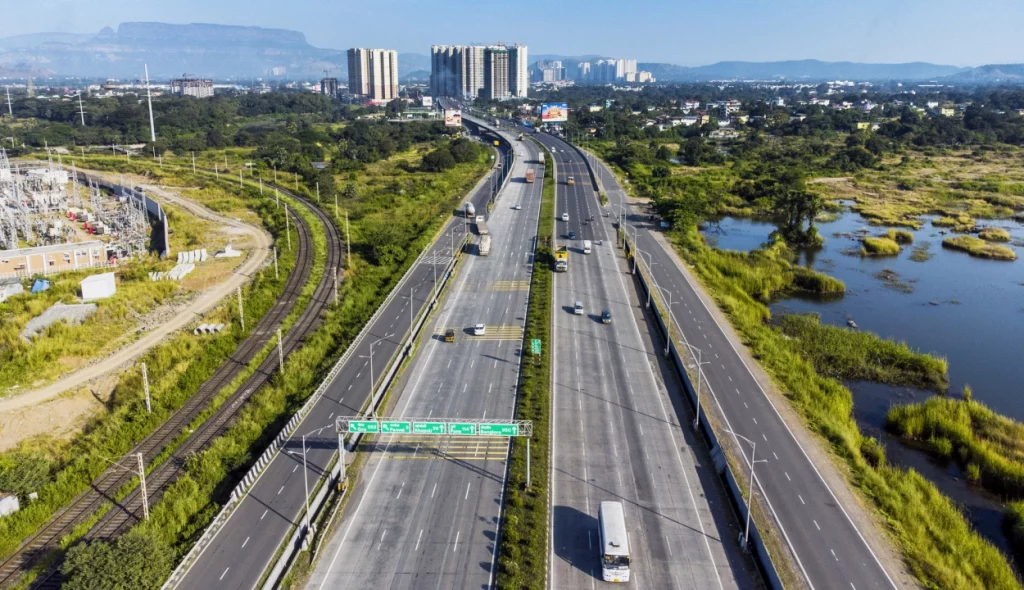India is poised for revolutionary change in 2024, with general elections soon to be held and Prime Minister Narendra Modi leading the pack with an astounding 76% approval rating, according to Morning Consult. The country’s trajectory has changed due to a decade-long concentration on robust infrastructure development, which is the reason for the tangible anticipation.
Since taking office in 2014, the goal of PM Modi’s administration has been to develop robust infrastructure in order to support India’s economic expansion. The observable outcomes in the real world have played a major role in Modi’s sustained popularity. India has clearly moved from being a country content with mediocre administration to one that strives for more, and its people want to see India continue to grow under Modi’s direction.
One example is Ayodhya, where on December 30, 2023, Prime Minister Modi dedicated a new airport and train station. Over Rs 15,700 crore was invested in the city’s overall development, of which Rs 11,100 crore came from Ayodhya alone. The redevelopment includes reconstructed and landscaped roads that lead to the Ram Mandir, representing the changing face of India.
The countrywide dedication to infrastructure development is demonstrated by the announcement of multiple massive projects in the lead-up to the Lok Sabha elections. Among the notable projects that demonstrate the scope and diversity of India’s continuous development are the Chenab Bridge in J&K, which is the highest rail bridge in the world; the Mumbai Trans Harbour Link; the Delhi-Mumbai motorway; the Dwarka motorway; and the Agra Metro.
India’s Road Revolution
India’s infrastructure drive is typified by its heavy emphasis on road networks, which have helped the nation overtake even China to become the world’s second-largest road network. Between 2014 and 2022, the overall length of national highways increased by an astounding 59% to reach 1,45,240 km in 2022–2023. With a goal of building a record 13,800 km of highways this year, the rate of development has increased.
Since 2014, more than 350,000 km of rural roads have been built as part of the Pradhan Mantri Gramme Sadak Yojana, improving accessibility and having a positive effect on the rural economy. The report from the Confederation of Indian Industry emphasises the growth of motorways as a preferred approach to improving India’s road network.
In order to promote economic growth in undeveloped and deserted regions, the Ministry of Road Transport and Highways is leading the development of 27 greenfield routes. This strategic strategy also applies to border areas, where India has completed 205 projects in the last two years, greatly improving infrastructure along the Line of Actual Control (LAC).
The Changing Face of India’s Railways and Airways
Railways and aviation are also major players in India’s infrastructure effort, even if roads are a crucial component. The Vande Bharat and Amrit Bharat trains represent how Indian railways have changed over time, moving from sluggish, dirty, and unreliable service to quick, contemporary options. The government’s dedication to modernising and improving railway services is demonstrated by the electrification of railway tracks, the deployment of KAVACH collision avoidance systems, and the massive expansion plans.
With 462 km of new trains being built, 372 km approved, and 1,056 km more planned, India is on track to become the country with the second-largest metro rail network in the world. Five new airports have opened in the last year, demonstrating the democratisation of air travel. By 2025, there will be 220 operating airports, strengthening India’s position as the aviation market with the fastest rate of growth in the world.
Bharat’s Time to Shine
India’s economic growth is largely attributed to its infrastructure, in which the government intends to invest Rs 143 lakh crore between 2024 and 2030. This significant investment is in line with Prime Minister Modi’s goal of making India a developed country by 2047.
Morgan Stanley predicts significant increases in manufacturing capacity, export market share, and per capita income and credits India’s revolutionary journey to important policy decisions made since 2014. The current infrastructure drive is in line with the PM Gati Shakti Masterplan, which highlights multimodal connectivity and raises the proportion of ports, trains, and inland waterways in India’s logistics industry.
India’s modernised and interconnected infrastructure will likely mirror the country’s economic growth as it continues to build out its infrastructure and lose its outdated image. Given that projections place India’s economy as the third largest in the world by 2027, the country’s continued success and wealth are a credit to it.
